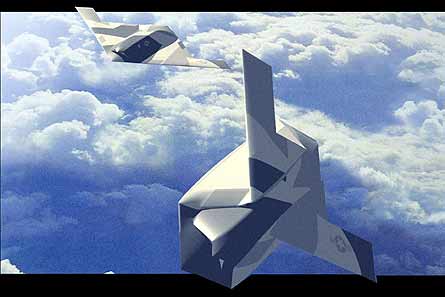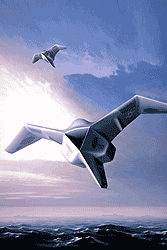An optionally-manned F-35 Joint Strike Fighter is among designs being studied by Lockheed Martin as it races to catch up with other unmanned air vehicle (UAV) system developers.
A fan-in-wing vertical take-off and landing UAV called Various is another concept being pursued by Lockheed’s famed Skunk Works, which last month took the wraps off its secret Polecat high-altitude, long-endurance UAV.
“We stayed focused on winning the F-35 in the early stages of unmanned aircraft development,” says Frank Mauro, vice-president, advanced systems development. “Now we need to get recognition that we are in the unmanned systems business.”
Lockheed’s Palmdale, California-based Advanced Development Programmes organisation – better known as the Skunk Works – has developed concepts for both optionally piloted and dedicated unmanned versions of the F-35. The unmanned version has extra fuel in place of the cockpit.
The company has also developed an operating concept in which two manned F-35s or F-22s would control four unmanned JSFs via an airborne internet. This would allow the unmanned aircraft to carry weapons, but not sensors, making them lower cost. Mauro expects the US forces to start becoming interested in unmanned operations once all three manned variants of the F-35 have flown.
|
|---|
| Last month Lockheed Martin took the wraps off its secret Polecat high-altitude, long-endurance UAV (above) |
 |
| Skunk Works is also developing technology for a morphing-wing “hunter-killer” UAV (above) |
 The Skunk Works, meanwhile, has applied lift fan technology from the JSF to its design for the Various VTOL UAV. Capable of operating from ships, the vehicle has lift fans in the wing for powered lift and a ducted fan in the fuselage for propulsion. Mauro says Lockheed is deciding whether to build a Various demonstrator.
The Skunk Works, meanwhile, has applied lift fan technology from the JSF to its design for the Various VTOL UAV. Capable of operating from ships, the vehicle has lift fans in the wing for powered lift and a ducted fan in the fuselage for propulsion. Mauro says Lockheed is deciding whether to build a Various demonstrator.
In addition to the flying-wing Polecat, the Skunk Works is developing technology for a morphing-wing “hunter-killer” UAV that combines the loiter efficiency of a surveillance platform with the dash speed of an attack aircraft; a submarine-launched and recovered unmanned combat air vehicle Cormorant (pictured left); and an unmanned hypersonic strike aircraft that can fly at Mach 10 and hit anywhere in the world within 2h.
Read more details of Lockheed's new UAV concepts in next week's edition of Flight International.
Source: FlightGlobal.com

















